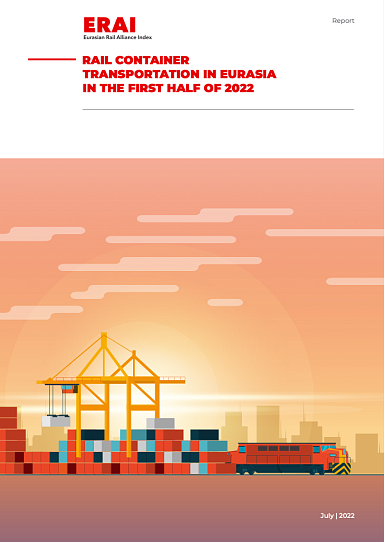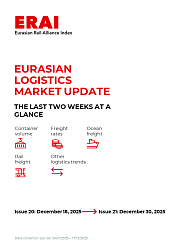The main factor which led to the decline in the volume of cargo transported along the Eurasian railway route was the international political situation: namely, Russia’s special military operation in Ukraine and the ensuing waves of sanctions and restrictions the Western countries levied against Russia and Belarus.
Despite the fact that the sanctions do not directly apply to the operator of the Eurasia route or the majority of transport and logistics companies, the general atmosphere of toxicity created around Russia and Belarus led to a cautious attitude among consigners to shipments through the territory of the EAEU.
The uncertainty associated with the international political situation has complicated the work of the trans-Eurasian railway corridors, but at the same time underscores the undeniable advantages of railway transit in comparison with other modes of transport. Despite a complete stop to air transportation between Russia and Europe and restrictions imposed on the work of Russian and Belarusian road carriers, as well as the reduction or termination of the activities of international sea freight carriers, rail traffic continues its stable operation.
In the first quarter of the year, the volume of goods transported remained at the level of the previous year. In January and March, transportation increased by 2.1% and 5.8%, respectively, month on month. At the same time, traffic volumes in February decreased by 5.4% compared to the previous year. The consequences of political and economic tensions began to show from the second quarter. In April, the reduction in freight volumes amounted to 24.7% compared to last year, however, later on, the volumes began to recover to the values of 2021. In May, the year-on-year reduction was 19.7%, and in June — 7.2%.
Different dynamics of recovery are noted for eastbound and westbound directions of the freight flow. Transportation from China to Europe, after a notable drop in freight volumes in April to 15,430 TEUs, showed an increase to 21,356 TEUs in May, and in June the volume already reached 24,700 TEUs. Despite a confident recovery, as of June of this year, westbound transportation is about 70% of the previous year. The recovery of the westbound freight flow was supported by a relatively favorable political and economic environment.
Trans-Eurasian container freight is characterized by the problem of cargo flow balance due to the quantitative dominance of China’s exports to Europe over exports from Europe to China. Eastbound traffic is the most difficult in terms of balancing, from Europe to China, the share of empty containers in the first half of 2022 amounted to 17.2%, which is 3.3 p.p. more than last year, but still less than the first half of 2020. At the same time, in the first half of 2019, the share of empty containers being sent east was about 43%.
For the western route, from China to Europe, the share of empty containers is at an all-time low since 2019. In the first six months of 2022, 99% of Europe-bound containers were loaded. The problem of balance is objectively inherent in trans-Eurasian freight transportation, however, targeted work with consigners, primarily in Europe, can significantly level out the specifics of cargo flows — this is what the efforts of transport and logistics companies as well as the route operator are focused on.
The current state of affairs prioritizes the stress resistance of transportation, and this has been the main focus of stakeholders over the past year. In August, the heads of the Belarusian, Kazakh and Russian railways signed a memorandum on the development of Eurasian rail traffic in the presence of the prime ministers of the respective countries, confirming the commitment of the states to the consistent and comprehensive development of Eurasia’s railway infrastructure.
The stability of railway container transportation as well as systematic work on organizing the through transportation of containers using seamless technologies continues to be an advantage of the railway option for China-Europe-China consigners.
Another factor affecting trans-Eurasian rail freight has been the cuts in Chinese rail export subsidies. In 2022 and 2023, the maximum allowable share of subsidies in the cost of rail transportation has been reduced to 10%. Subsidy levels are expected to decrease further due to the significant progress made in making transport along the New Silk Road more attractive. However, despite these conditions, the traffic dynamics demonstrate that the subsidy factor led to an accelerated growth in freight volumes at the initial stage, and now it is becoming a secondary factor due to the «maturing» and development of Eurasian railway freight transportation.
Record-breaking volumes in 2021 signaled to market participants that they need to expand infrastructure capabilities, as well as improve the efficiency of operations. The current year 2022 shows the resilience of the Eurasian railway route, despite the economic downturn in the economies of Europe and China, as well as the aggravation of political contradictions in Eastern Europe.




